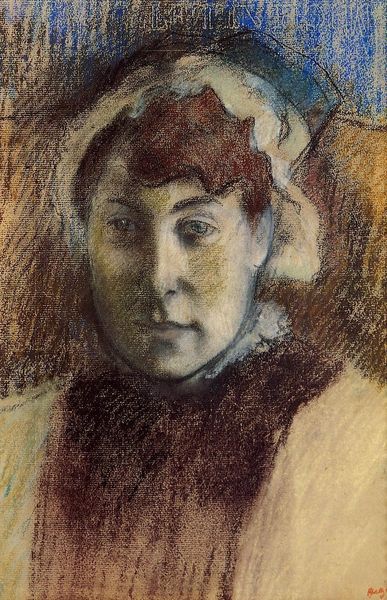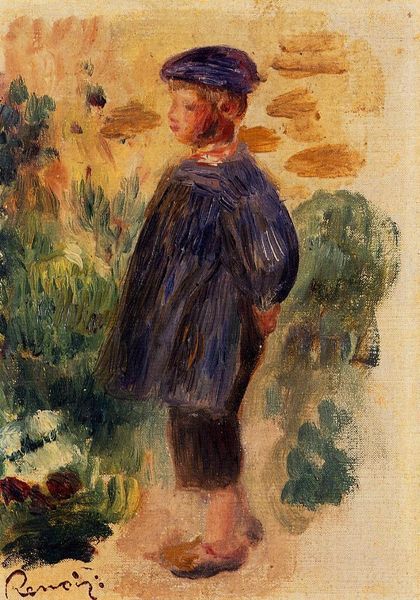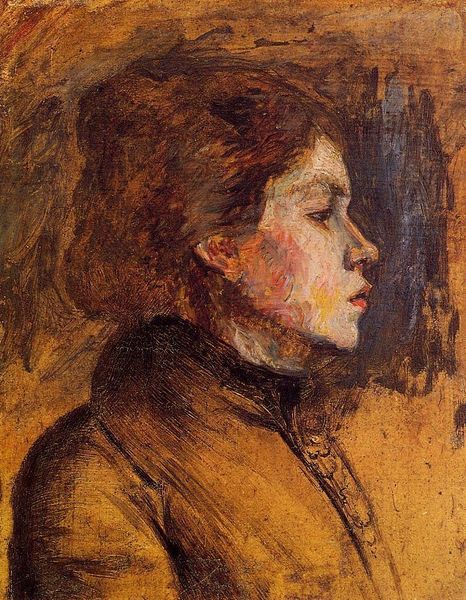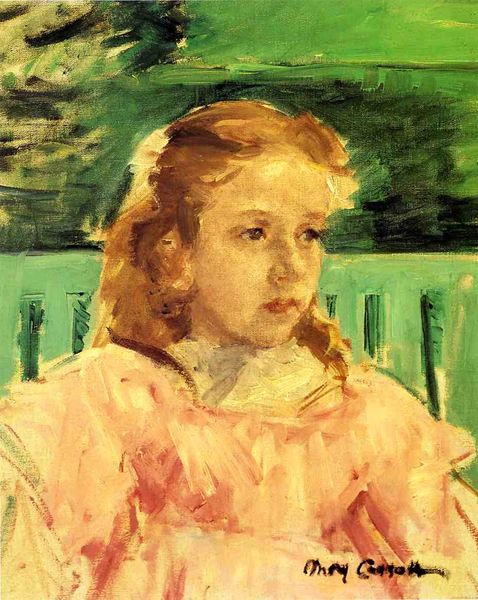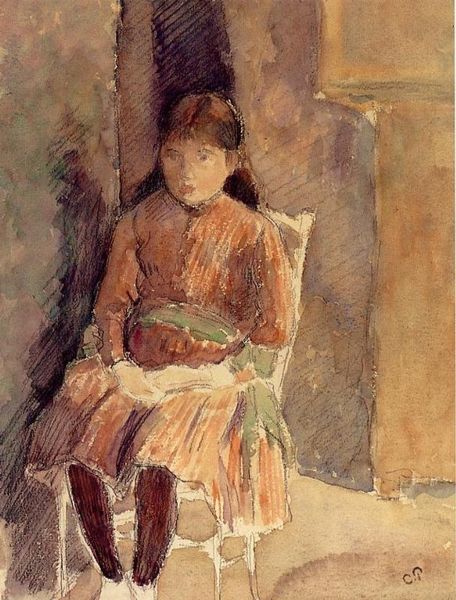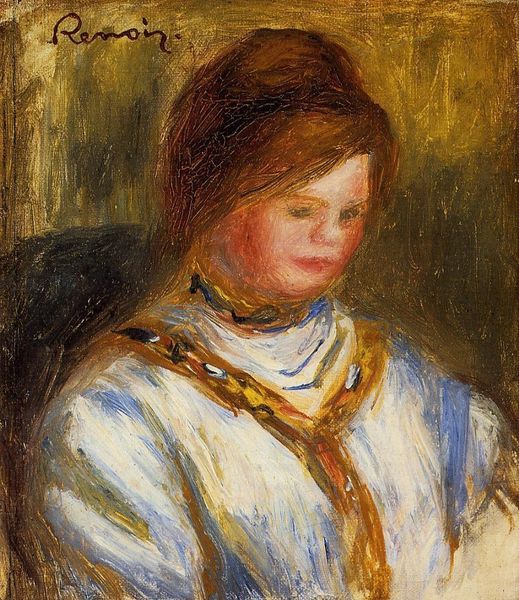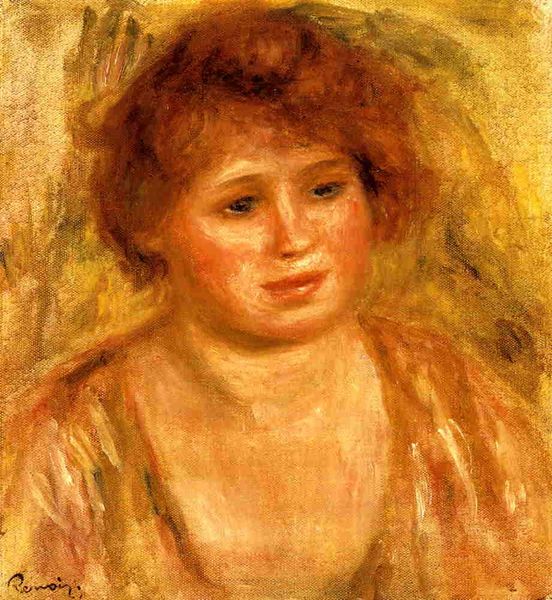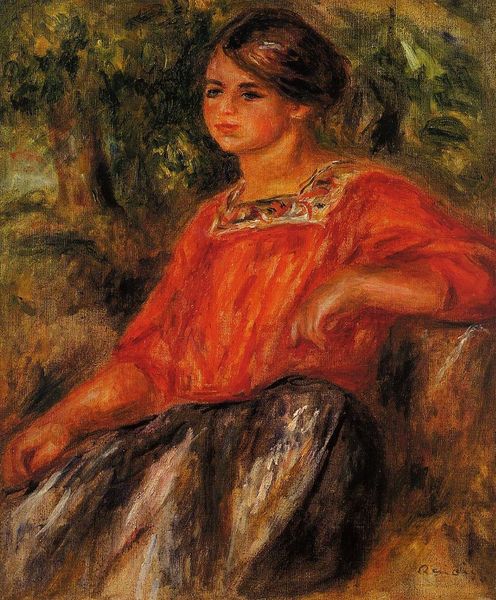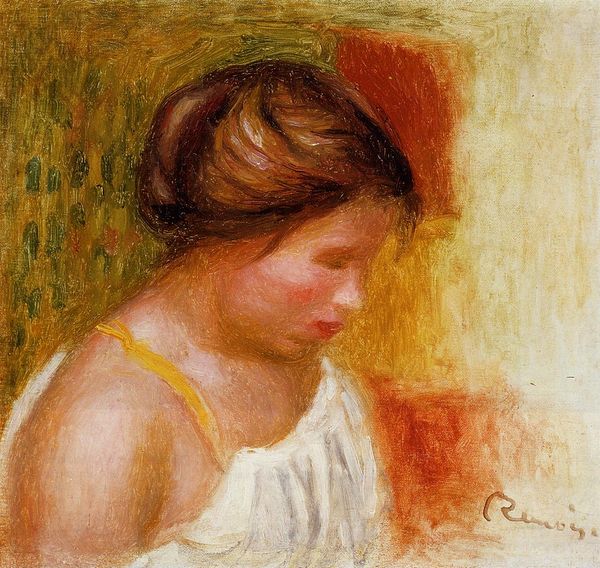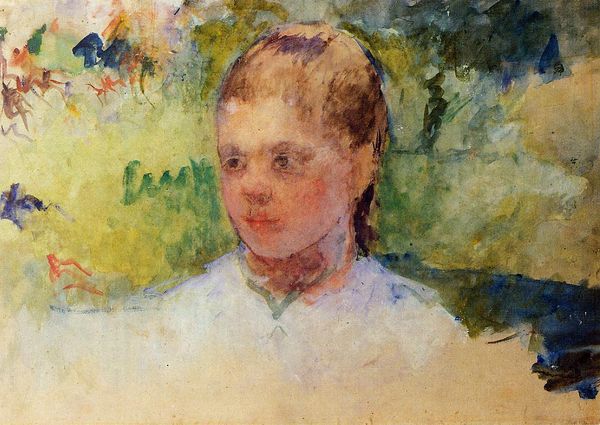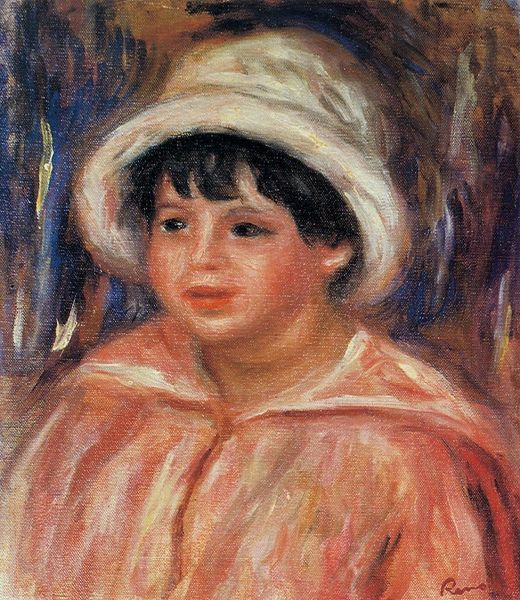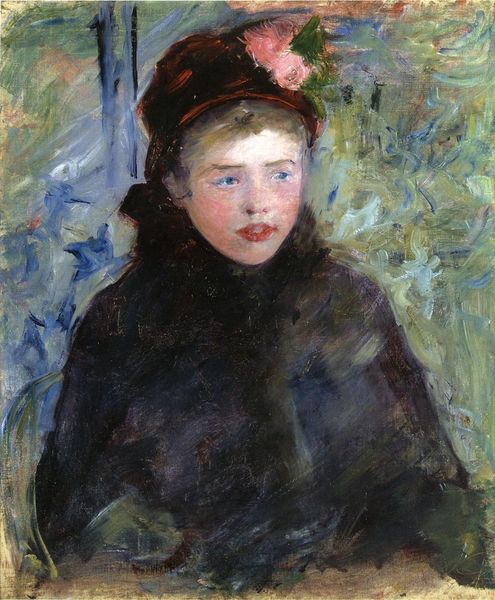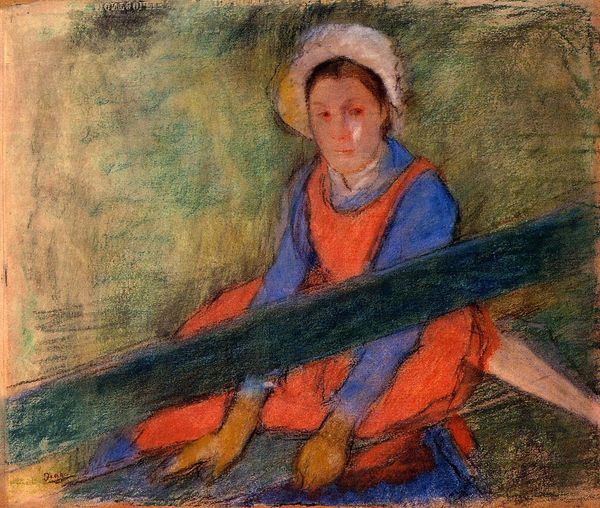
painting, watercolor
#
portrait
#
painting
#
impressionism
#
french
#
oil painting
#
watercolor
#
group-portraits
#
france
#
genre-painting
#
watercolor
#
realism
Dimensions: 31.1 x 24.6 cm
Copyright: Public domain
Curator: Let’s delve into Camille Pissarro’s "Portrait of the Artist's Son, Ludovic Rodolphe," painted in 1888. The artwork gives off an intimate feeling, it’s quite captivating. What is your first impression? Editor: There’s a fragility here, isn’t there? The soft watercolor washes create this delicate mood and tender vulnerability in the boy's expression. It seems at odds with some of Pissarro's more known and overtly political works. Curator: It’s true; considering Pissarro’s anarchist leanings, one might expect sharper social commentary. But this work offers something else—a glimpse into his domestic life. Look at how the layering of watercolor creates depth and texture. It’s not just representational; the material itself communicates something about light and atmosphere of a father gazing at his son. Editor: Precisely. And it raises interesting questions about labor too. The relatively quick nature of watercolor compared to oil, speaks to immediacy, accessibility, almost democratic artmaking. He captures the child’s essence in fleeting moments that were painted fairly rapidly and spontaneously rather than the time investment usually reserved for wealthy patrons or self-portraits intended for galleries. How does family intimacy become a worthy artistic subject? Curator: I think that’s a key aspect to understand. By focusing on everyday life – genre painting, as some have called it – he validates those experiences as worthy of artistic consideration. It also begs the question about how art institutions, influenced by class, gender, race, etc., have historically elevated certain themes and materials over others. Editor: I also notice how the informal composition—the loose brushstrokes, the unblended washes. It seems so un-bourgeois compared to more academic portraits. This is a father presenting his son without rigid formal conventions or aspirational signifiers like posture or dress. We may also have to account that as Pissarro was part of the impressionist artistic revolution, some norms were willingly broken. Curator: That's a valid point. This painting feels radical precisely because of its unassuming nature. Editor: Thinking about historical contexts, Pissarro and his son, and also about social relations, gender, and family bonds certainly does give a new understanding about impressionist artists' working environments in late 19th-century France. Curator: Well, looking closer, there’s always something new to find—something about the human connection and the power of art. Editor: Yes, absolutely. "Portrait of the Artist's Son, Ludovic Rodolphe," pushes the boundaries of what we value and who we deem worthy of representation in art.
Comments
No comments
Be the first to comment and join the conversation on the ultimate creative platform.
